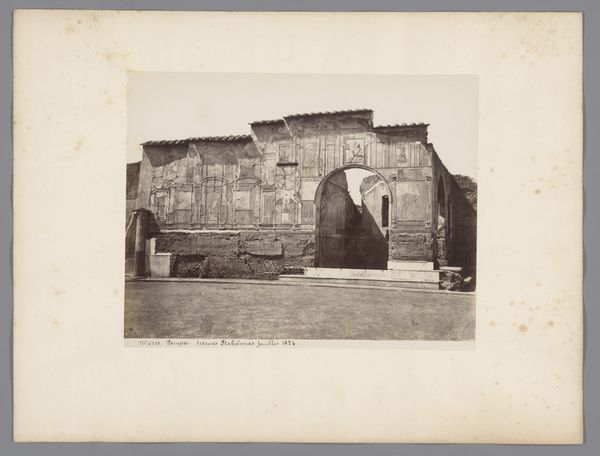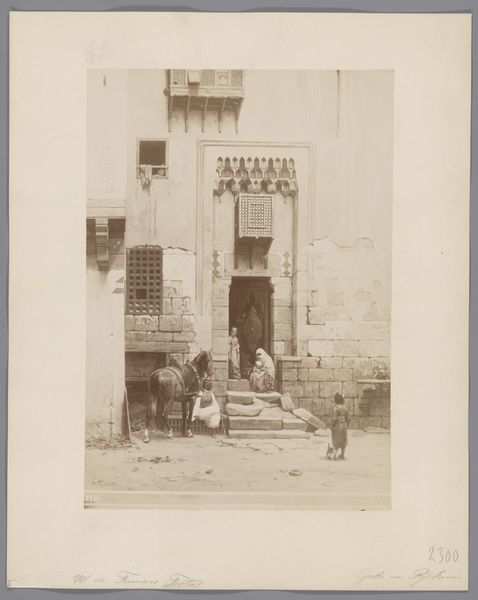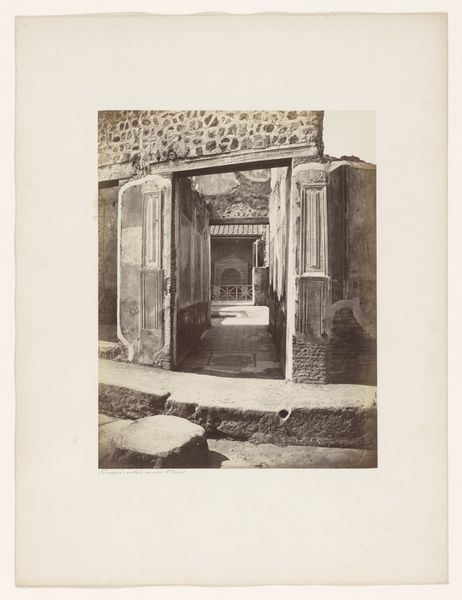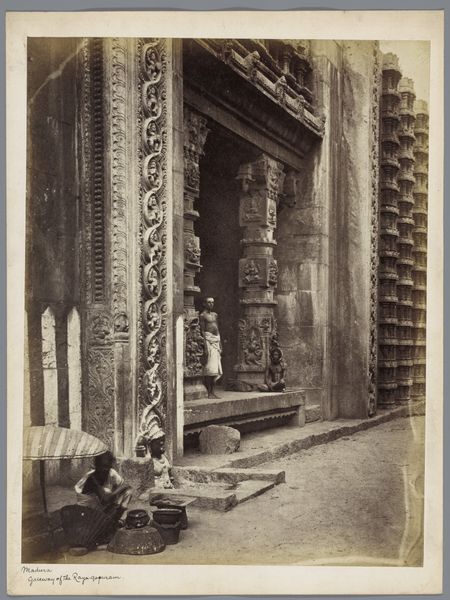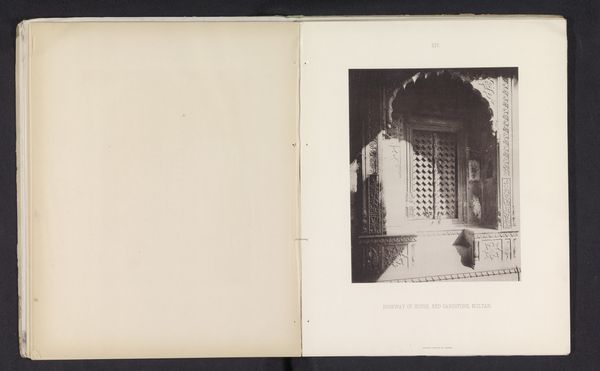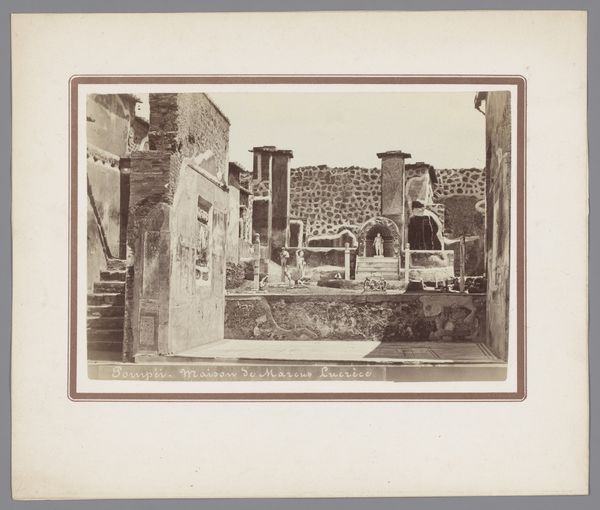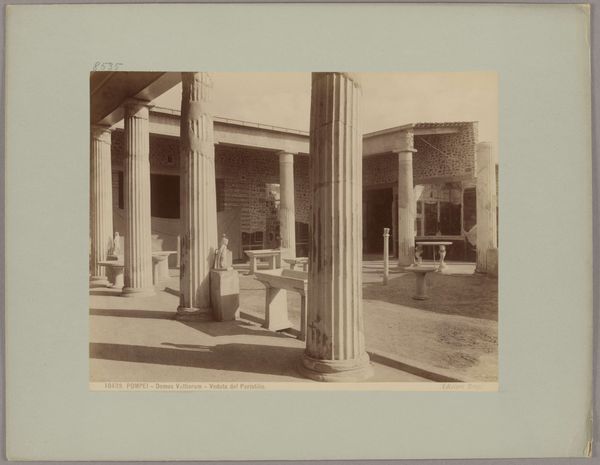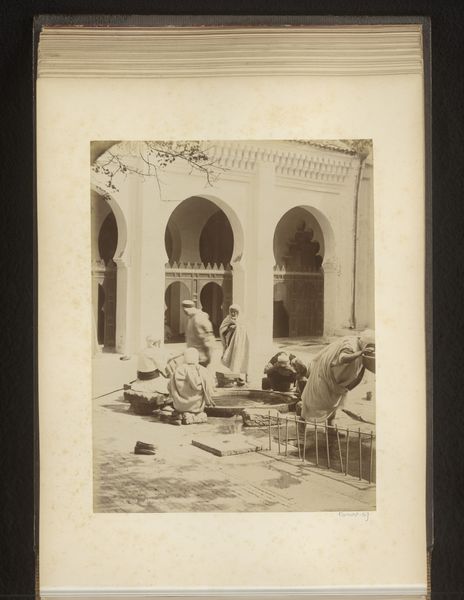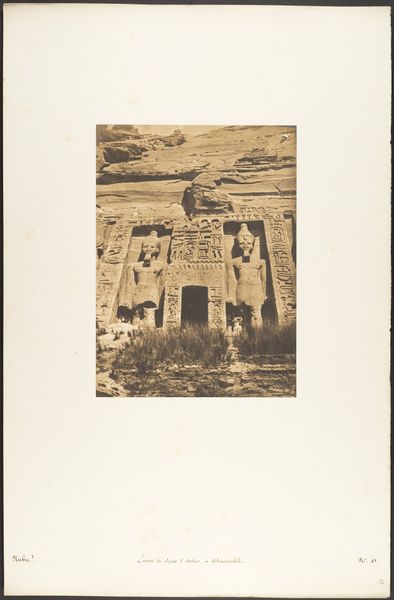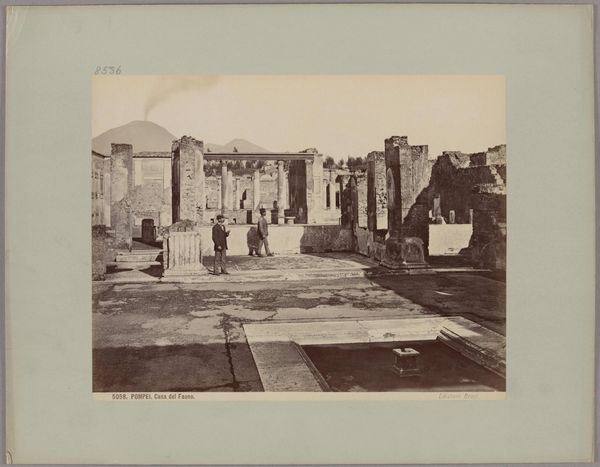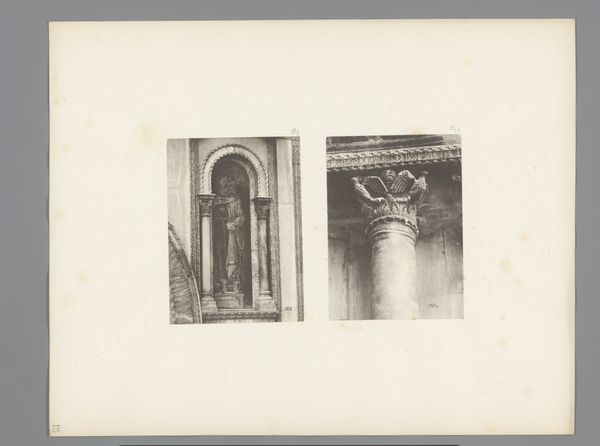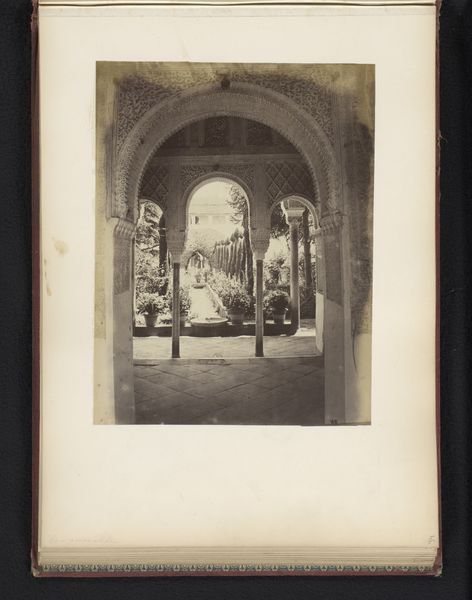
Restanten van gebouwen met op de voorgrond een fontein met een beeld van Fortuna te Pompeï, Italië 1857 - 1914
0:00
0:00
photography, gelatin-silver-print
#
landscape
#
photography
#
ancient-mediterranean
#
orientalism
#
gelatin-silver-print
#
cityscape
Dimensions: height 404 mm, width 308 mm
Copyright: Rijks Museum: Open Domain
Editor: Here we have Giorgio Sommer's gelatin-silver print, "Restanten van gebouwen met op de voorgrond een fontein met een beeld van Fortuna te Pompeï, Italië," created sometime between 1857 and 1914. There's something so still and quiet about it, despite depicting a bustling ancient city frozen in time. What strikes you about this photograph? Curator: The stillness you observe reflects the powerful institutional act of photographic preservation and the 19th-century's fascination with ancient worlds, presented as ‘discoveries’. The ruins of Pompeii became a stage for photographers to present not only history, but also their own interpretation of it for a European audience steeped in Orientalist aesthetics. Consider how the deliberate composition places Fortuna's fountain in the foreground. What do you think that placement achieves? Editor: It feels like Fortuna is watching over the ruins. And because the statue is at the forefront, it makes me feel present and connected to its past. Do you think this relates to tourism at the time? Curator: Precisely. Photographs like these fed into and constructed a European imagination of Italy. They catered to travelers seeking tangible connections to the past. Sommer's business acumen is revealed: images transformed ruins into accessible souvenirs. Does that impact your appreciation of the work? Editor: It makes me think about the role of photography itself, how it not only documented the past but also shaped how people perceived and consumed it. Curator: And to continue that train of thought, we can explore the photograph's construction of ‘authenticity’. How much of what we see is simply a reproduction of what Sommer wanted his audience to see? Editor: Wow, this is fascinating! I initially just saw a serene photograph, but now I’m thinking about how it's a constructed image reflecting both historical fascination and 19th-century marketing. Curator: Exactly! And by being aware of these influences, we gain a more nuanced understanding of the photograph and its place within broader cultural trends.
Comments
No comments
Be the first to comment and join the conversation on the ultimate creative platform.
